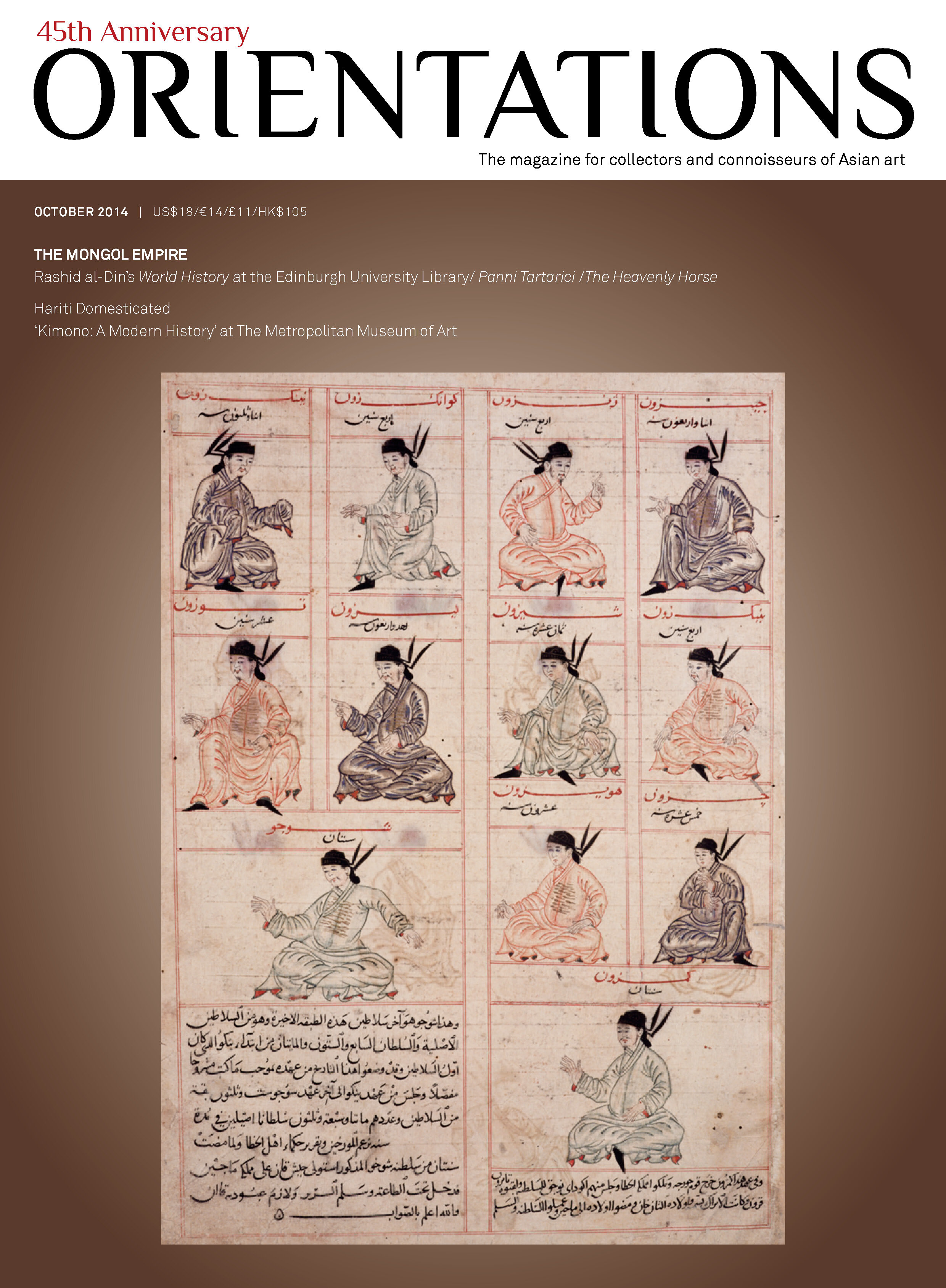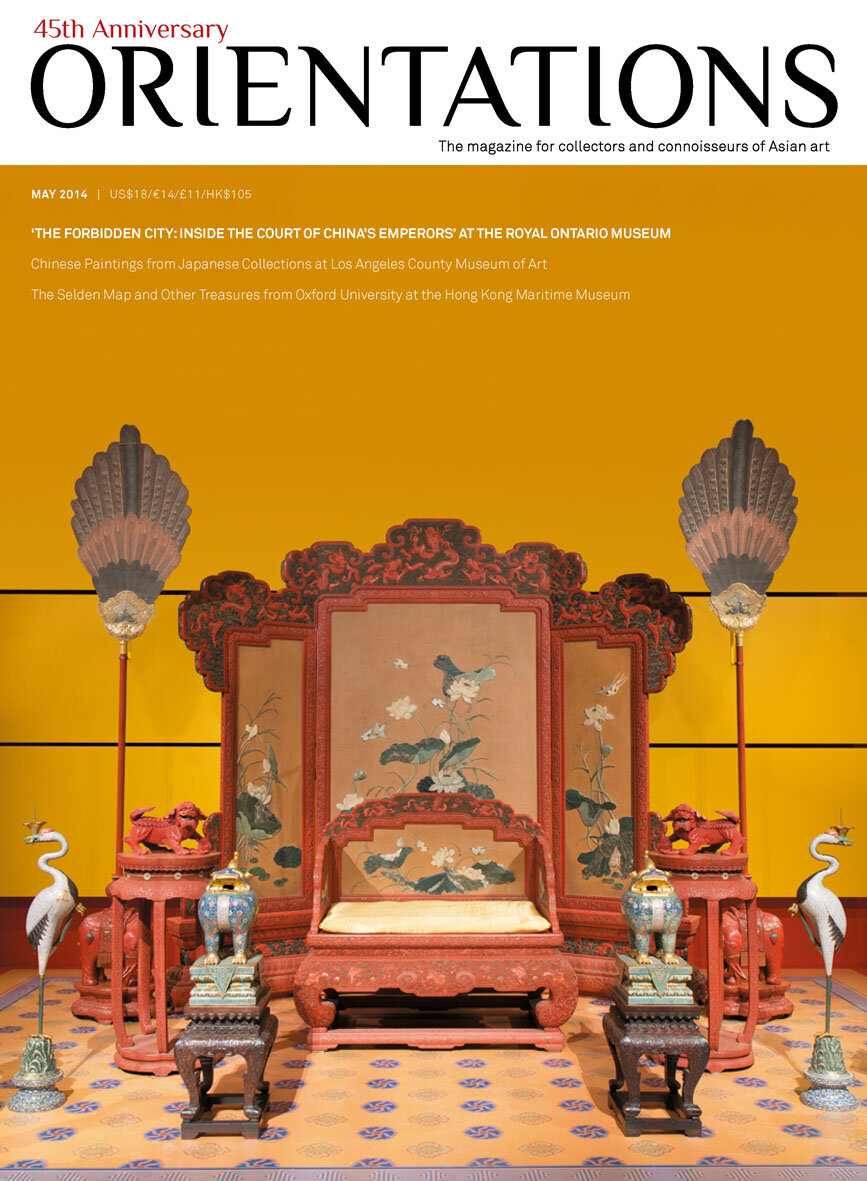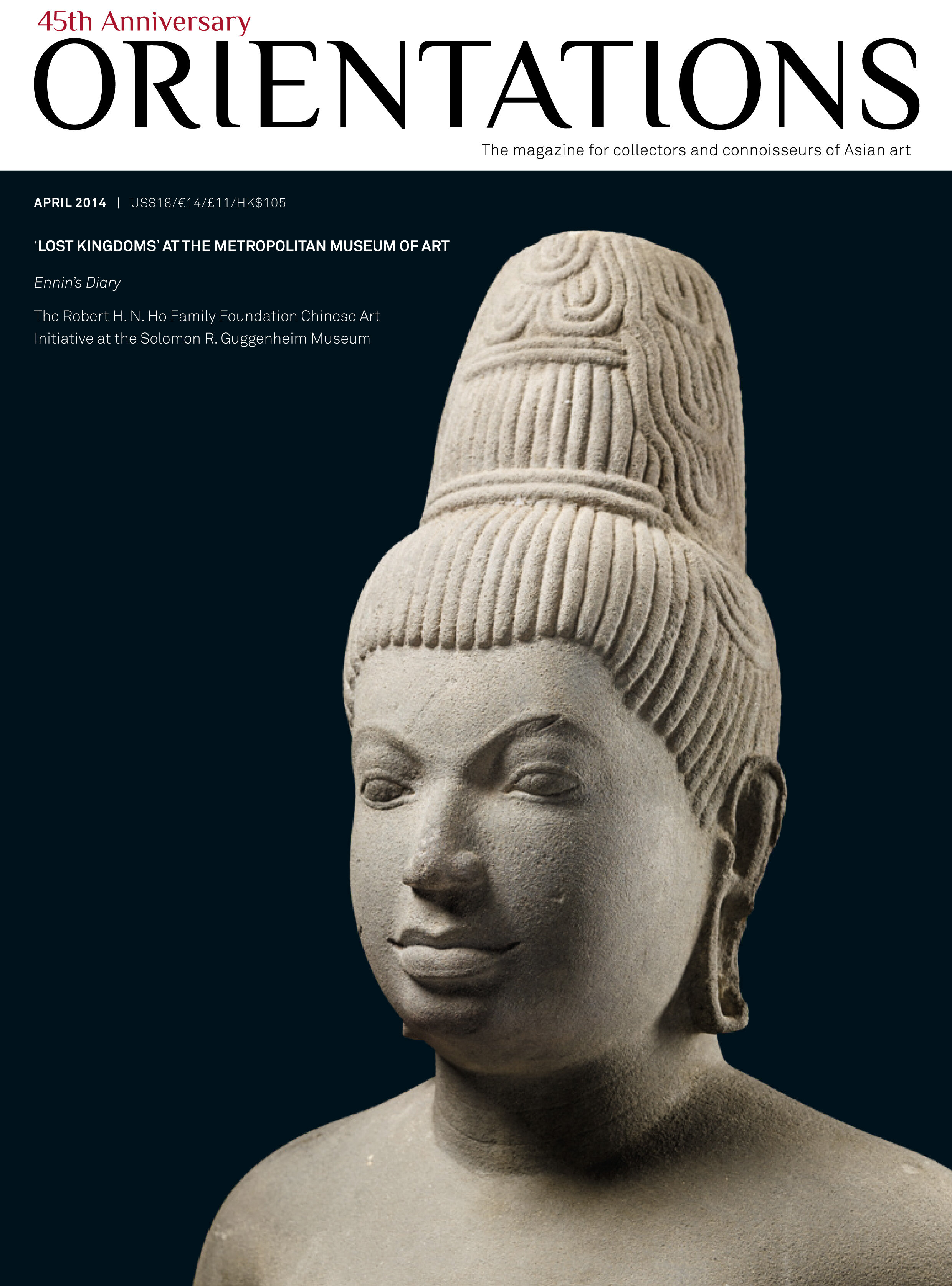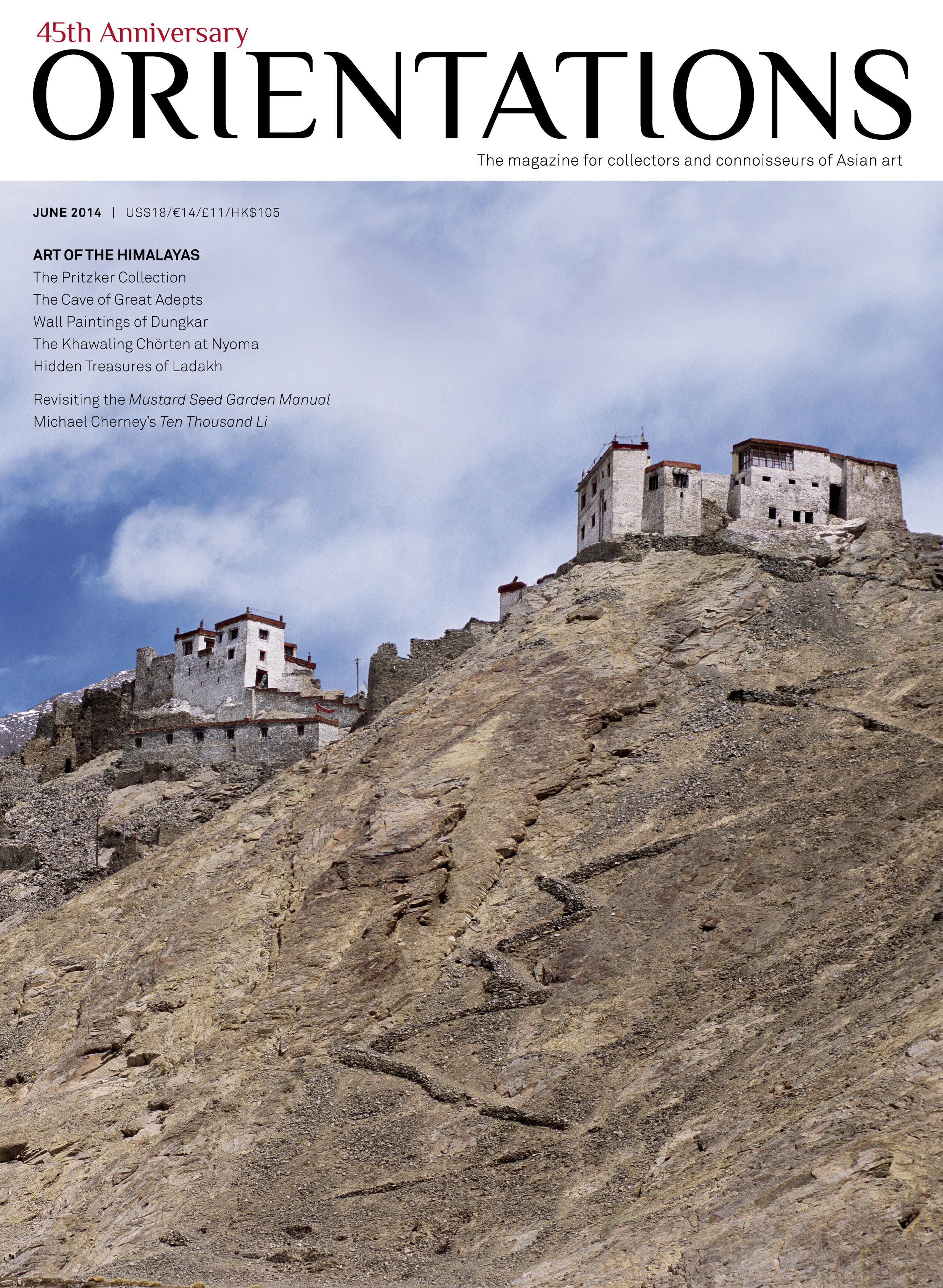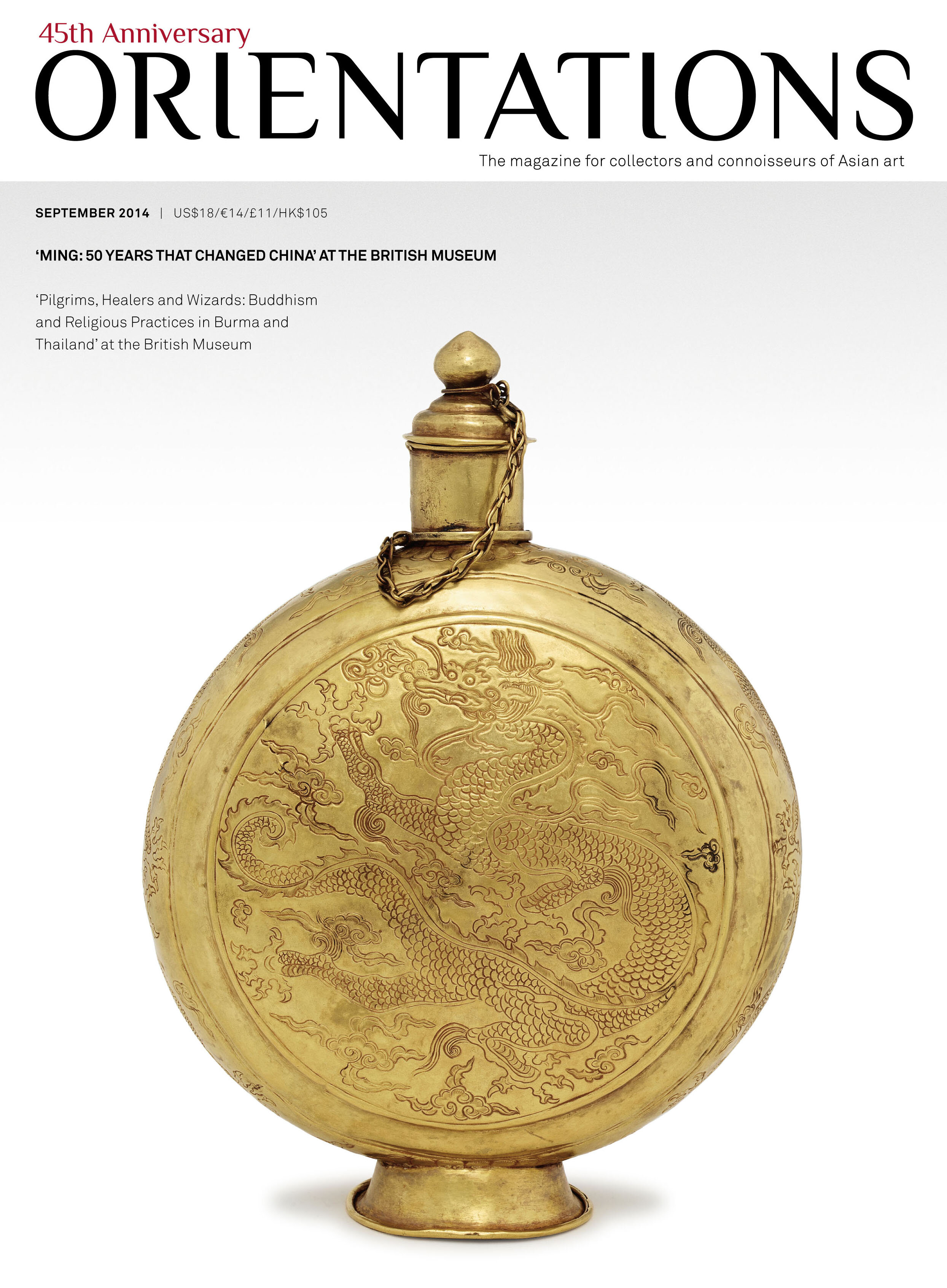 Image 1 of 1
Image 1 of 1


SEP 2014
VOLUME 45 - NUMBER 6
Opening at the British Museum (BM) this autumn is a major exhibition on life in early Ming China. The 280 works on view, drawn both from the BM’s collection and from thirty other private and public collections worldwide, reveal much about the flourishing of arts and culture and burgeoning global trade in the first half of the 15th century.
On view in the exhibition and illustrated on our cover is the largest gold flask to survive from the early Ming period. Many gold vessels were probably melted down by later generations as their forms fell out of fashion, or were buried in as-yet-undiscovered tombs. The shape of this flask—a form also adopted in Chinese porcelain—derives ultimately from Middle Eastern metalwork, thus uniting the exhibition’s main themes of early Ming courts and their international connections.
In her article, Jessica Harrison-Hall introduces these themes in greater detail. Craig Clunas provides intriguing clues as to daily life in early Ming China, referring to a Korean phrasebook of colloquial Chinese widely circulated in the 15th century. Luk Yu-ping shares insights into the practice and patronage of Daoism, while Helen Wang explains the historical complexity of Ming currency. Zhao Feng examines textiles found in the tomb of an early Ming woman.
Also in this issue, Alexandra Green sheds light on the primary roles played by objects in religious practices in Burma and Thailand, with a discussion of diverse 18th to 21st century Buddhist accoutrements. In our commentary, Kate Fitz Gibbon offers her views on the recent US regulations pertaining to trade in ivory.
FEATURES
Jessica Harrison-Hall. ‘Ming: 50 years that changed China’ at the British Museum
Craig Clunas. Going Shopping with ‘The Old Chinese’ in Early Ming Beijing
Luk Yu-ping. Teachings of the Way: Daoist Objects in the Exhibition ‘Ming: 50 years that changed China’
Helen Wang. Currency of Empire: Money in the Ming Dynasty
Zhao Feng. Early Ming Women’s Silks and Garments from the Lake Tai Region
Alexandra Green. ‘Pilgrims, Healers, and Wizards: Buddhism and Religious Practices in Burma and Thailand’ at the British Museum
PREVIEWS & REVIEWS
Jessica Harrison-Hall. ‘Ming: 50 years that changed China’ at the British Museum
Craig Clunas. Going Shopping with ‘The Old Chinese’ in Early Ming Beijing
Luk Yu-ping. Teachings of the Way: Daoist Objects in the Exhibition ‘Ming: 50 years that changed China’
Helen Wang. Currency of Empire: Money in the Ming Dynasty
Zhao Feng. Early Ming Women’s Silks and Garments from the Lake Tai Region
Alexandra Green. ‘Pilgrims, Healers, and Wizards: Buddhism and Religious Practices in Burma and Thailand’ at the British Museum
COMMENTARY
Kate Fitz Gibbon. US Ivory Ban: Blunt Instrument Misses Target
VOLUME 45 - NUMBER 6
Opening at the British Museum (BM) this autumn is a major exhibition on life in early Ming China. The 280 works on view, drawn both from the BM’s collection and from thirty other private and public collections worldwide, reveal much about the flourishing of arts and culture and burgeoning global trade in the first half of the 15th century.
On view in the exhibition and illustrated on our cover is the largest gold flask to survive from the early Ming period. Many gold vessels were probably melted down by later generations as their forms fell out of fashion, or were buried in as-yet-undiscovered tombs. The shape of this flask—a form also adopted in Chinese porcelain—derives ultimately from Middle Eastern metalwork, thus uniting the exhibition’s main themes of early Ming courts and their international connections.
In her article, Jessica Harrison-Hall introduces these themes in greater detail. Craig Clunas provides intriguing clues as to daily life in early Ming China, referring to a Korean phrasebook of colloquial Chinese widely circulated in the 15th century. Luk Yu-ping shares insights into the practice and patronage of Daoism, while Helen Wang explains the historical complexity of Ming currency. Zhao Feng examines textiles found in the tomb of an early Ming woman.
Also in this issue, Alexandra Green sheds light on the primary roles played by objects in religious practices in Burma and Thailand, with a discussion of diverse 18th to 21st century Buddhist accoutrements. In our commentary, Kate Fitz Gibbon offers her views on the recent US regulations pertaining to trade in ivory.
FEATURES
Jessica Harrison-Hall. ‘Ming: 50 years that changed China’ at the British Museum
Craig Clunas. Going Shopping with ‘The Old Chinese’ in Early Ming Beijing
Luk Yu-ping. Teachings of the Way: Daoist Objects in the Exhibition ‘Ming: 50 years that changed China’
Helen Wang. Currency of Empire: Money in the Ming Dynasty
Zhao Feng. Early Ming Women’s Silks and Garments from the Lake Tai Region
Alexandra Green. ‘Pilgrims, Healers, and Wizards: Buddhism and Religious Practices in Burma and Thailand’ at the British Museum
PREVIEWS & REVIEWS
Jessica Harrison-Hall. ‘Ming: 50 years that changed China’ at the British Museum
Craig Clunas. Going Shopping with ‘The Old Chinese’ in Early Ming Beijing
Luk Yu-ping. Teachings of the Way: Daoist Objects in the Exhibition ‘Ming: 50 years that changed China’
Helen Wang. Currency of Empire: Money in the Ming Dynasty
Zhao Feng. Early Ming Women’s Silks and Garments from the Lake Tai Region
Alexandra Green. ‘Pilgrims, Healers, and Wizards: Buddhism and Religious Practices in Burma and Thailand’ at the British Museum
COMMENTARY
Kate Fitz Gibbon. US Ivory Ban: Blunt Instrument Misses Target

